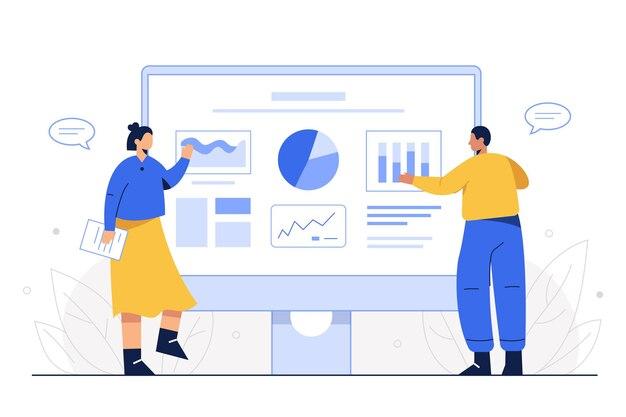Do you know why your potential prospects move away from your sales pipeline?
While disinterest could be one common reason, there is a second reason. The second most common reason is you not understanding what to do with them.
You have a marketing team and you have a sales team, how well do you balance and function with them?
You do realize that while marketing can help tap your prospects, pushing the ideal ones to sales is what matters.
During this process, a lot can happen. The prospects could lose interest, you could miss out on converting prospects into leads, and much more.
What if we tell you that this all can be avoided if only you understood the MQL and SQL technique. While these two remain a debate on which is better, we believe that the combination of both can spark or rather complete the missing gaps for your lead generation process to be a success.

To help you get a clearer picture, we have curated this article.
What to expect?
Let’s get started.

MQL stands for Marketing qualified lead.
Let’s understand this better with an example:
Assume that you have posted an ad about your brand online. You start to see multiple prospects coming into your website and enquiring about your product.
Then see Adam who looks like he wants to explore more about your solution. You also notice that there are a few other prospects who are just scrolling around. But they have no intention to learn about your brand nor make an investment.
Start to observe Adam’s action from the lot, he goes on to read your blogs, he is viewing your feature page, and more.
Here is when you realize that Adam is sold with your brand but not completely sold.
However, he still has a chance which is exactly why he falls under the MQL, marketing qualified lead.
In this category, leads that stand the potential to become a prospective customer is what you will find here.
Here such leads can become your prospect or continue to retain as a warm lead. Either way a good nurturing is what will help push them forward.
For example:
A good nurturing would look like this:
When you conduct all the above actions, you’re only making it easier for your prospects to move into SQL.
Let’s learn about this too in detail.

SQL stands for sales qualified leads.
Let’s understand this with an example:
Your ad is visible on social media by multiple of your potential prospects.
Multiple of them come online and there are just a few that wish to learn about your band.
From that, you spot Molly.
Molly’s actions seem to be different.
Molly is visiting your pricing page, signing up for a free demo, engaging with your team via chat on how your product functions, and more.
This is a clear sign to say Molly has the interest to invest in your brand and it requires only one engagement from your sales team.
Here the only engagement which Molly will look for is:
This is when you realize that Molly has moved to the SQL.
In simpler terms, SQL refers to those prospects that are hot leads and are ready to make the investment with just one final push from your end.
You can consider these leads from the MQL category.
These could be leads that have undergone a good amount of nurturing and are now finally ready to make that investment.
Now that both the terminologies are clear for you, the questions or rather doubt still persists, why should you learn about them?
Pro tip: When you understand them better, your lead generation game will fall right.
The image above is the perfect illustration of what a sales funnel would look like.
As you can see passing through every stage, the prospect reaches down the sales funnel.
In each of the stages, the actions are conducted in such a manner where the potential prospects are nurtured accordingly.
For instance, in the awareness stage, the use of PR, social media, and more are being conducted so that your potential prospects find it easy to find you and learn about you.
But you see, at times, your prospects wouldn’t really follow this same path.
For instance, they could move past the awareness stage and come to the evaluation stage or they could get the catalog in the purchase stage and then maybe jump back into the evaluation stage and more.
In such cases how will you know when to deal with such kinds of prospects or how can you deal with them?
You have learned that MQL and SQL are important because these two play a major role in your lead generation game.
For example, if your potential prospect is in the evaluation stage, that means you’re in MQL, where you need to continue nurturing your prospects. If the prospect is on the usage stage, then they fall under the SQL section.
Understanding this will help you cater to your prospects better and make your lead generation a success.
Now that you have understood the major factor of this topic, let’s get you going on how you can conduct the action.
The best way to understand whether your prospect’s time has come to reach the SQL stage is when their patterns give you the insight. As stated earlier, you are now aware of what an MQL and SQL are which means with the actions of your prospects you can better identify them.
Once this happens, it becomes easy for you to conduct the actions in the respective categories. This closes any gaps to cater to your prospects and helps you achieve a good flow of lead generation process.
You will have an ideal lead profile that would help you identify who your right leads are from the crowd. For instance, the designation of your prospects, the brands you want to target, and more. When you come across such prospects that match the profile, it becomes easier to understand that such leads can easily be pushed from the MQL to the SQL without any hassle.
Lead scoring helps you understand where your prospects stand in your sales funnel. The higher the score, the better are your chances of converting that lead, the lower the score, which means either the lead is not the one that requires your attention or certain of those leads require nurturing actions.
Let’s understand this better with an example:
You have two leads in front of you, say Lead A and Lead B. Lead A has a lead score of 7 out of 10, and Lead B has a score of 4 out of 10. It is obvious that Lead A has the highest score and will require your attention because it still requires further nurturing from your end. With Lead B if you believe that nurturing can further help them to improve the score the same action of nurturing will be applied accordingly.
Another great way to ensure that leads are being moved from MQL to SQL well is to always conduct a regular meeting to discuss this either on a weekly basis or a monthly basis. Doing this will help you understand what you need to tweak, what you can do better, and work on improving this cycle.
You are going the extra mile by making it easy for you and your team to function well and sell faster to your prospects. With this plan, you’re making it convenient for you to push down your leads further down the sales funnel.
Your modern buyers are all well known about the brands they wish to consider, in such cases, leading them on the right journey is what you need to do your best at.
With the understanding you share about MQL and SQL, you are creating the ideal route for your prospects to be converted well down the sales funnel.
So tell us, what do you think of this article? What are your opinions on this article? We would like to hear your opinion.
, April 9, 2021, Team LimeCall

Top rated callback automation platform that connects your website visitors to your team within 20 seconds through phone callback and whatsapp driving upto 40% more conversions.
Learn more